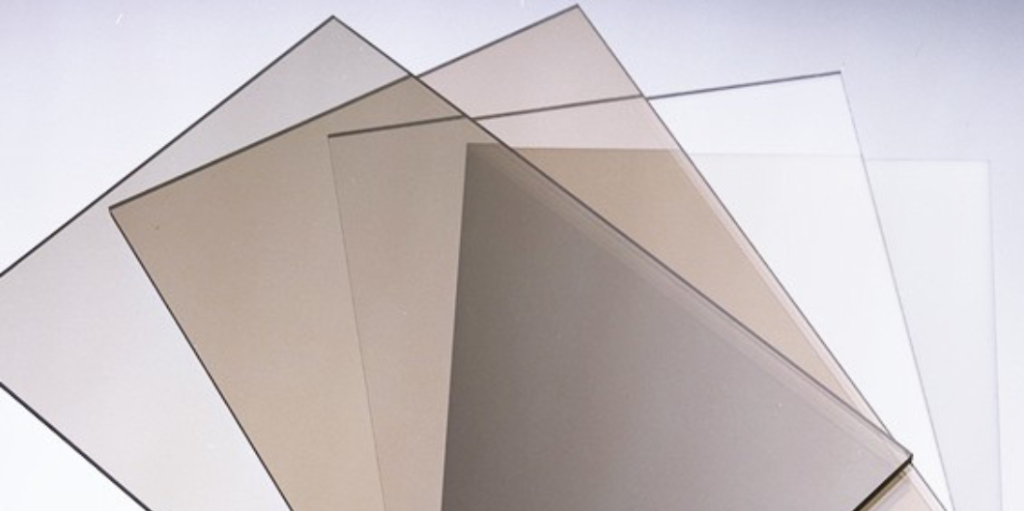Eco-Friendly and Efficient
With the ever-growing demand for sustainable and innovative building materials, the benefits of plastic glazing have come to the forefront of architectural and design discussions. Plastic glazing, particularly materials like polycarbonate and acrylic, provides a compelling use across various applications. These materials offer a range of advantages, from enhanced durability to superior insulating properties, making them an attractive choice for modern construction projects.
In this article, we will delve into the myriad benefits of plastic glazing, comparing it to traditional glass and highlighting the advantages of materials like polycarbonate in glazing applications. Additionally, we will explore the innovative uses of plastic in architecture and design, discussing its impact resistance, UV protection, and insulation properties. Lastly, we will consider the sustainability aspect of plastic glazing, shedding light on its eco-friendly features and recycling potential.


An Expert is just around the corner.
With over 100 years of combined product knowledge and industry experience, we are confident our plastics experts can help you find a solution for your application.
Comparing Plastics and Glass in Glazing
Plastics, particularly polycarbonate, are revolutionizing glazing applications by offering a lightweight alternative to traditional glass. Weighing about half as much as glass, polycarbonate simplifies the installation process and significantly reduces the risk of breakage. In commercial environments, where safety and durability are paramount, modified polycarbonate sheets, including bullet-resistant and multiwall varieties, provide an optimal balance of security and performance.
A shining example is the integrated rear polycarbonate quarter panel of Smart cars, which demonstrates the material's versatility and potential when infused with innovative design. Additionally, polycarbonate shines in educational settings, where its UV and scratch resistance contribute to a safe and enduring learning environment. This is bolstered by its exceptional impact resistance, which amplifies security measures in public buildings.
Here's a brief comparison highlighting the edge that polycarbonate holds over glass:
| FEATURE | POLYCARBONATE | GLASS |
|---|---|---|
| WEIGHT | Light | Heavy |
| IMPACT RESISTANCE | High | Moderate |
| OPTICAL CLARITY | Superior | Good |
| VERSATILITY | High | Moderate |
| INSTALLATION | Easy | Cumbersome |
Notably, plastic glazing admits around 10% more natural light than glass, which underscores its superior optical properties. This enhancement in natural light can translate to health benefits such as better sleep quality and increased vitamin D exposure. Polycarbonate is not just a plastic for windows; it embodies an ideal solution for innovative building design.
Innovative Uses of Plastic in Glazing
Plastics like acrylic and polycarbonate are taking the glazing industry by storm. Acrylic sheeting, with its exceptional strength—up to 50 times stronger than glass—and lightweight nature, is easy to handle and offers remarkable performance enhancements. These versatile thermoplastics are suited for an extensive array of architectural glazing applications, from school windows to hurricane-resistant windows, providing enhanced aesthetics, safety, energy savings, and lasting durability.
For instance, plastics revolutionize architectural design in schools, contributing robust yet visually appealing elements to windows, walls, and doorways. The Fenestration and Glazing Industry Alliance (FGIA) recognizes this potential, guiding building professionals to harness plastic-glazed skylights and sloped glazing effectively to elevate building design.
Here is a quick look at some uses of plastic in glazing:
Glazing Applications
- School Glazing
- Skylights
-
Pedestrian Walkways
-
Hurricane-Resistant Windows
-
Clean Rooms
-
Partitions
-
Entry Areas
-
Stair Railings
Plastics offer superior toughness and impact resistance for these applications and weather, bullet, and blast resistance, making them an indispensable material for secure areas. With their ability to merge function and form, plastics present a smart, sustainable choice in modern architecture.
Why Impact Resistance Is Important
Plastic glazing materials like acrylic and polycarbonate stand at the forefront of impact-resistant glazing solutions. Acrylic sheets surpass traditional glass with 17 times the strength while being only half the weight, making them an exemplary choice for high-safety areas. They merge the necessity of protection with the ease of installation due to their lightweight.
Polycarbonate takes durability a step further. It offers even greater impact resistance, known under brand names like Makrolon and Lexan. These characteristics make polycarbonate sheets adept for environments with excessive vibration or risk of impact, safeguarding against shattering.
Further augmenting their resilience, some plastic glazing materials are treated with specialty coatings to resist abrasion and static. This means a significant increase in the longevity of the materials across various applications, whether in residential, commercial, or public spaces.
Safety is also ingrained in the plastic glazing's design. Unlike glass, these plastic sheets break into blunt-edged pieces rather than dangerous, sharp fragments when impacted. This attribute makes plastic glazing materials a safer alternative for contemporary building designs, where minimizing injury risk is a paramount concern.
UV Protection and Insulation
Plastic glazing exhibits unique advantages when it comes to outdoor applications. Polycarbonate sheets, in particular, stand out for their UV-blocking capabilities. They protect interiors from the sun's harmful rays and reduce visible light transmission, providing just the right amount of natural daylight while shielding against excess sunlight.
Moreover, plastic glazing's impact resistance offers unmatched safety for areas prone to accidents or environmental hazards. Their robustness makes them the ideal solution for regions where glass breakage is a concern—significantly enhancing security and peace of mind.
The insulation properties of plastic glazing materials are another strong suit. These plastic solutions are about 20% more efficient at insulating than traditional glass, contributing to superior temperature control. This means potential energy savings, thanks to their aptitude to maintain consistent indoor climates, regardless of external temperatures.
Despite regular exposure to the elements, plastic sheeting maintains its aesthetic and structural integrity better than its glass counterpart. It stands up well against wear and tear, making it a durable choice for long-term outdoor use.
It is important to note that the performance and longevity of plastic glazing heavily rely on proper maintenance. Following the cleaning guidelines from suppliers ensures continuous protection and efficiency, preserving the celebrated features of plastic glazing materials in all weather conditions.
Eco-friendly Aspects
Plastic glazing is not just about aesthetic appeal and durability; it plays a significant role in sustainability efforts within the construction industry. The thermal insulation properties of materials like polycarbonate and acrylic sheets are exceptional, meaning they help to maintain indoor temperatures with less reliance on HVAC systems. This, in turn, leads to reduced energy consumption—a win for both property owners and the environment.
With sustainability at the forefront, it's encouraging to know that many plastic glazing materials are recyclable. Their life cycle continues beyond their initial use, as they can be repurposed, limiting material waste and easing the environmental impact from production to disposal.
Here's a quick overview of the environmental benefits of plastic glazing:
Energy Efficiency
Better insulation properties lower energy demands for heating/cooling.
Recyclable Materials
Built for reuse, plastic glazing supports a circular economy.
Lightweight Nature
Reduced shipping emissions due to lighter transport loads.
Sustainable Practices
Production methods that focus on waste reduction.
Notably, the lightweight nature of these materials means less fuel is consumed during transportation, leading to lower emissions. Additionally, the extended lifecycle owed to their impact resistance results in fewer replacements over time—key for reducing construction materials' environmental footprints.
Conclusion
Plastic glazing materials, encompassing options like acrylic and polycarbonate sheets, present a compelling alternative to traditional glass in many applications. These materials are renowned for their dimensional stability, optical clarity, and exceptional durability, offering impact resistance and scratch resistance advantages over glass. From commercial to public buildings, plastic glazing proves its worth through attributes such as lightweight, energy efficiency, and remarkable impact strength.
Embracing plastic solutions can significantly benefit building design, thanks to their insulation properties that promote reduced energy consumption and their recyclability that aligns with sustainable practices. Moreover, the lightweight characteristic of plastic sheeting not only expedites handling and installation but contributes to decreased shipping emissions.
Incorporating plastic material, such as acrylic sheets, into your project invites numerous advantages, including:
Enhanced impact resistance, ideal for safety-focused applications like machine guards and bullet-resistant windows.
Size pieces that can be tailored to meet specific requirements without compromising on optical properties and mechanical integrity.
Plastic windows and glazing that offer a wide range of outdoor and indoor design possibilities.
Should you consider the exceptional clarity and benefits of plastic glazing for your next project, contact the plastic experts at Piedmont Plastics. Our team is ready to provide you with an ideal solution for your glazing needs, backed by our vast knowledge and quality products.








